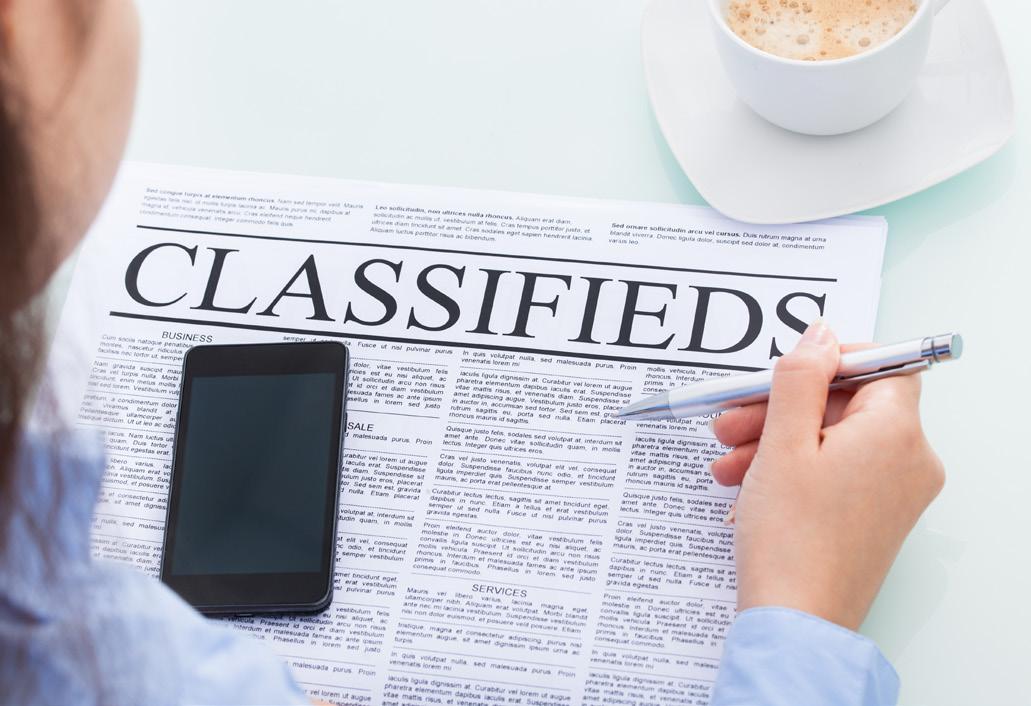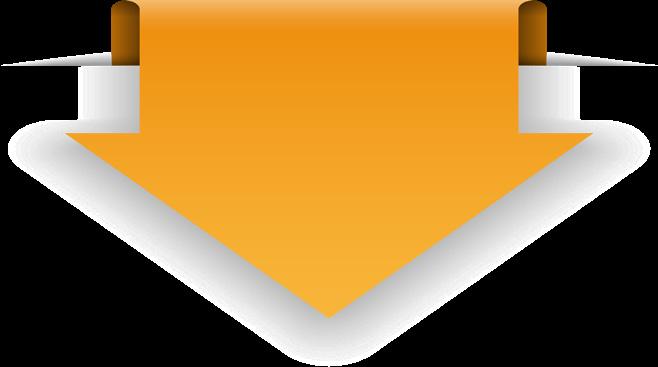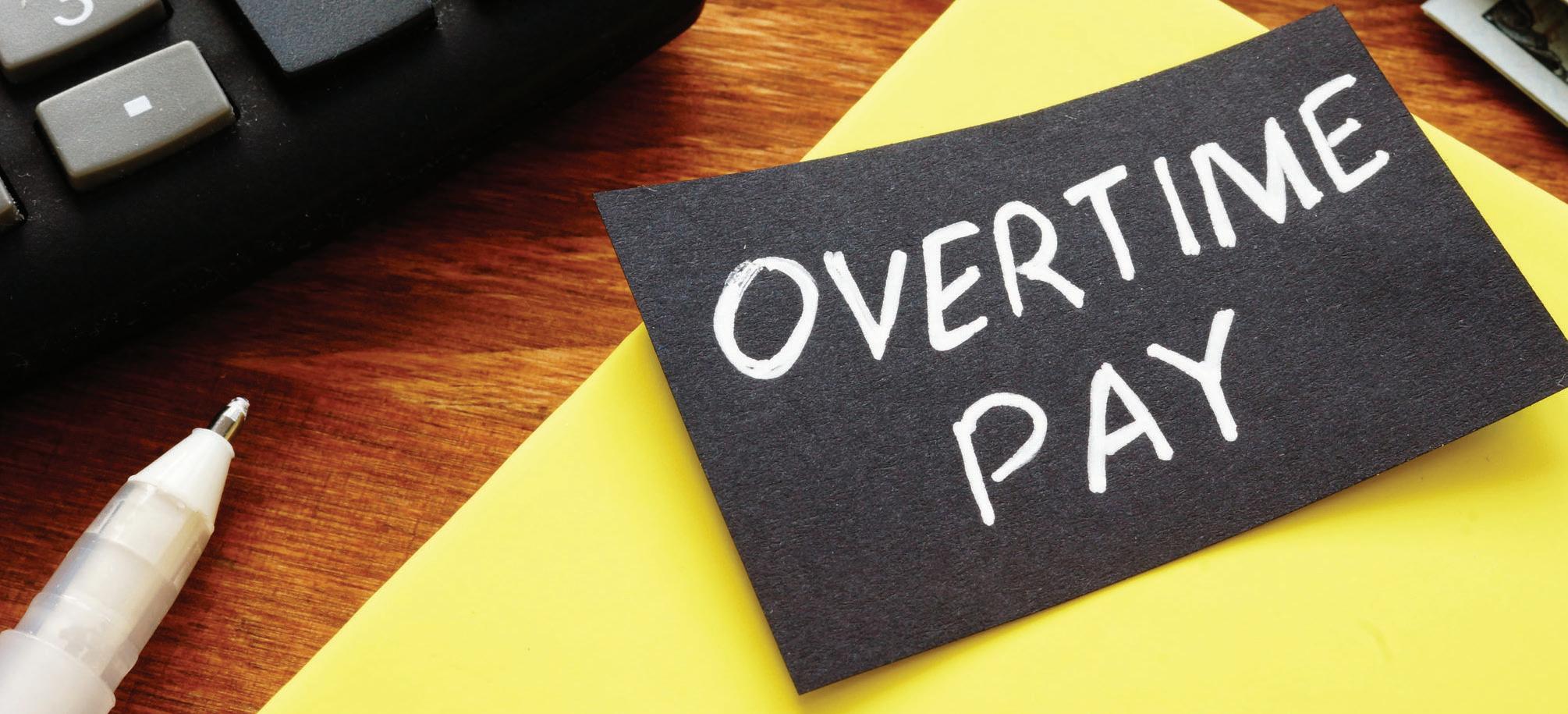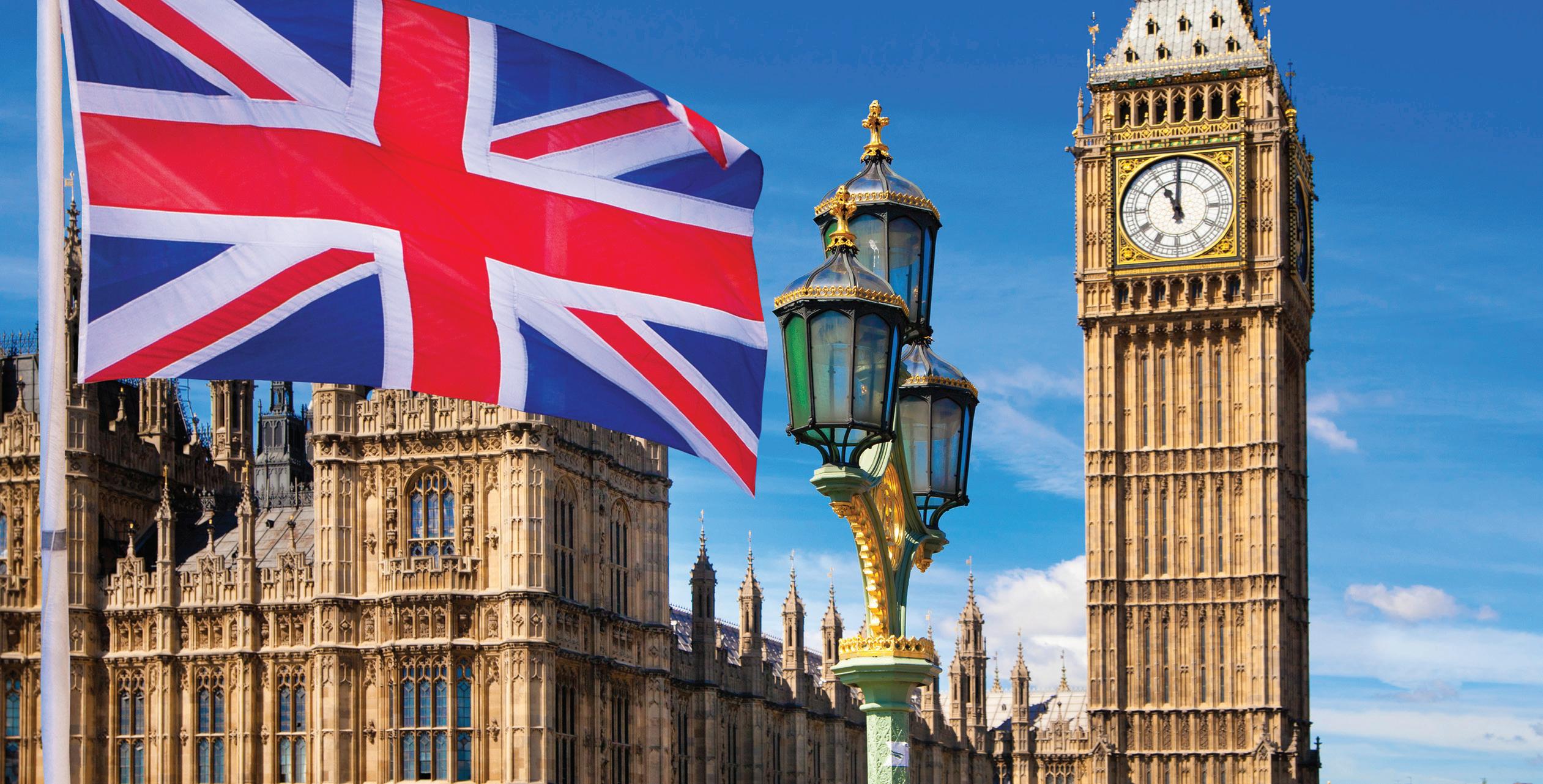
12 minute read
Tax Topics
A TAX REFORM IDEA BIG ENOUGH FOR TEXAS
By Jade Walle, CPA
Although Texas currently has no state income tax, responded in its October 17, 2005 release “Understanding in 2019, the state Constitution was amended Tax Reform: A Guide to 21st Century Alternatives,” saying we to ban any future individual income tax. should evaluate tax reform based on the following principles: Proposition 4 was approved by a two-thirds legislative majority. After this high hurdle was • Simplicity, reached, a statewide referendum resulted in 74.4% of • Fairness, Texans voting (1,477,373) to approve the Constitutional • Economic Growth and Efficiency, amendment and 25.6% (509,547) voting against. • Neutrality, The legislative vote was surprisingly bipartisan, with 29% • Minimizing Noncompliance, of Democrats supporting the amendment. It appears that • Impact on Government Revenues, the disdain for an individual income tax resonates beyond • Certainty, and party lines, with Texans agreeing to permanently alter the • Payment Convenience. state Constitution with a 49-point differential. Texas is one of seven states that does not impose any argued that taxation should follow the four principles of: income tax and like 18 other states, has no estate or inheritance tax. Obviously, Texas is off to a great start, but • Fairness, the question is whether the current system is the best it • Certainty, can be for Texas. • Convenience, and You might be wondering what CPAs have to say about the merits of what a “good” system of taxation looks like. Currently, Texas’ Office of the Comptroller of Public Accounts Although we risk sounding oxymoronic, the inevitability oversees the state’s finances and the collection of over 60 overcomes us as we all are innately aware that some different taxes, fees and assessments. State sales taxes (a system to raise the state’s revenue is necessary. What the 6.25% state rate that may be increased up to 2% for local sales state decides to spend its receipts on is another matter, taxes) make up approximately 57% of taxes collected, which but in any case, revenues are needed to run the state’s was $34 billion for fiscal year 2019. government and provide some level of service to citizens. • Transparency, In Adam Smith’s book, The Wealth of Nations (1776), Smith • Efficiency. An additional $25 billion comes from taxes on other goods Knowing this reality, the question then becomes, what is and transactions, such as oil production, motor vehicles, the ideal tax system and what should it look like? AICPA cigarettes and natural gas. Separate and apart from the state
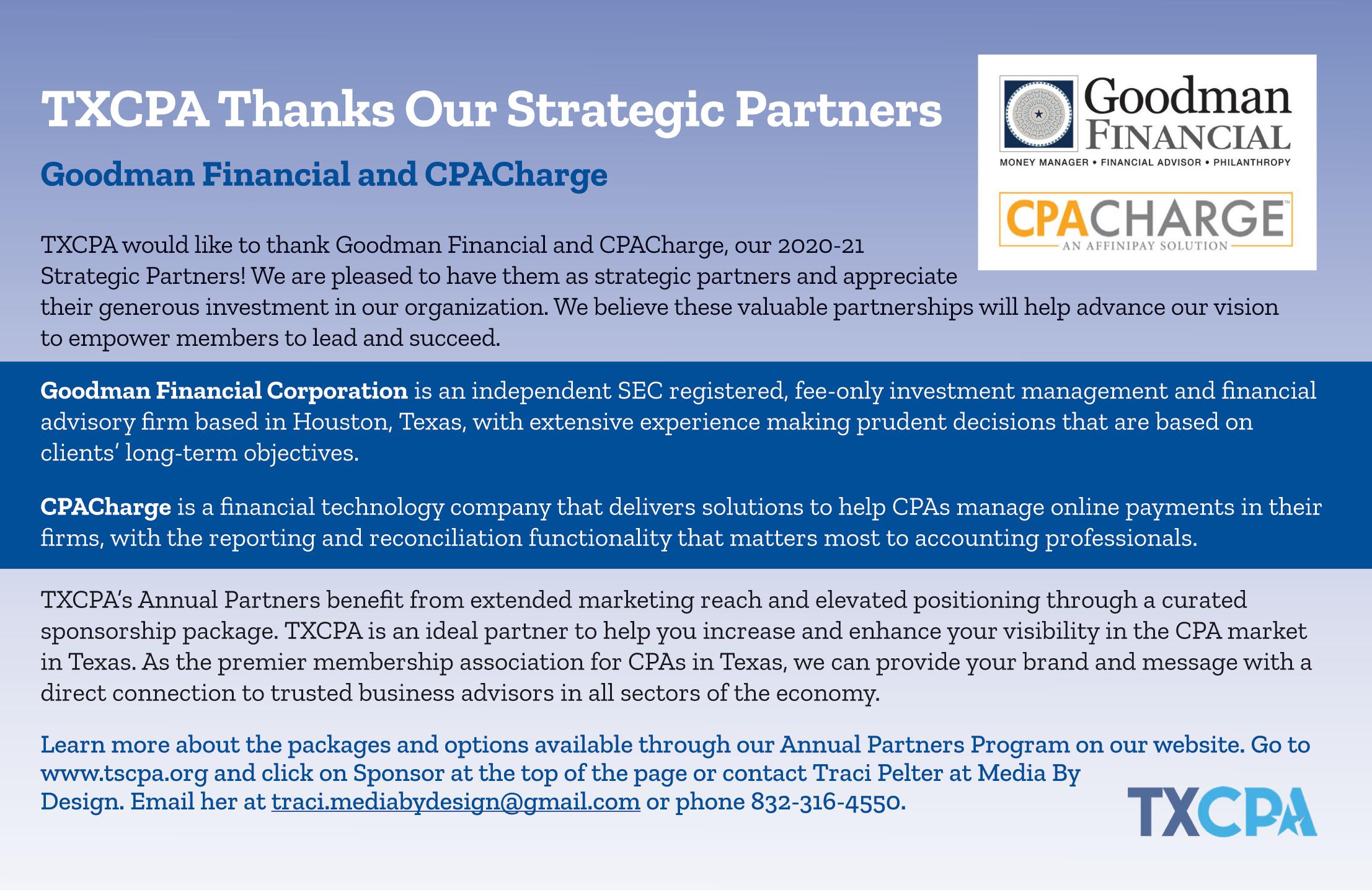
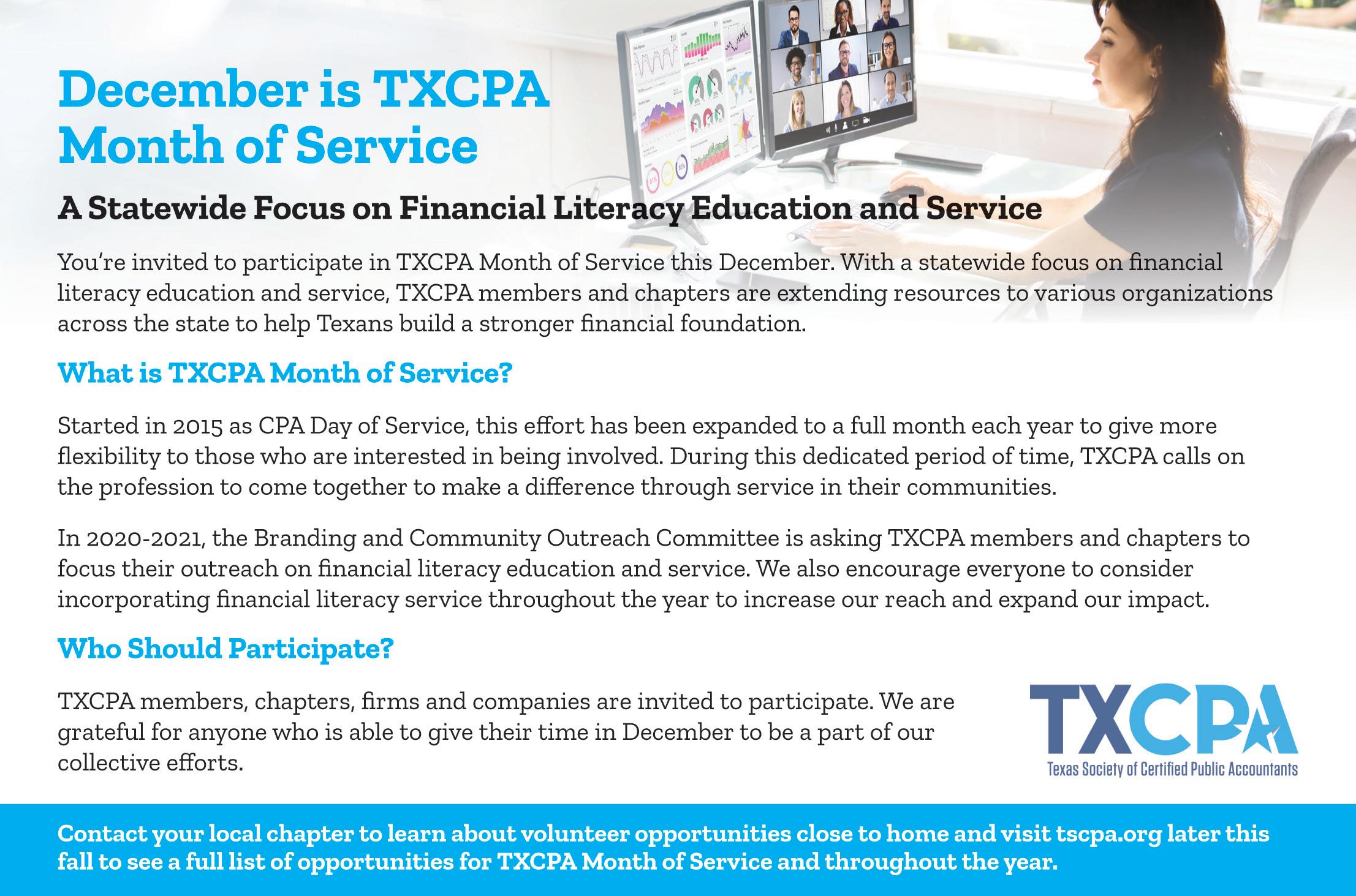
level, property taxes are levied by Texas’ 254 counties, the six largest of which alone levied over $33 billion in 2018. As it relates to most businesses, Texas also administers its margin tax, a modified gross receipts tax, a hybrid tax somewhere between a tax on income and gross revenue of up to 1%. Apart from fees and other assessments, the state primarily funds its government operations through property taxes and state sales and use taxes. food and health-related items, which are the subject of
political infighting, lobbying efforts and disagreement. The ultimate question then is, should Texas continue to operate its current property, margin, and sales and use tax systems? If, based on the data above, we answer no to this question, the next question we would expect is, “what would you replace the current state tax system with?”
Recent polls indicate that due to high Texas tax Currently, several states, including Alabama, Georgia and assessments, most Texans favor some type of property Nebraska, are seriously considering eliminating their tax reform. However, others assert that since high current income, property, and sales and use tax systems, property tax areas generally have better public schools, in favor of a state FairTax. higher property taxes, in addition to higher property values, act as a barrier to owning property in certain A Single Rate Consumption Tax higher performing school districts. If property taxes were eliminated, lower performing schools may have to compete and improve more, as increased mobility to areas with higher rated public schools would act as an embedded competitive driver. The FAIRtax is actually a 21-year-old proposal (H.R. 25) at the federal level, with over $22 million of grassroots research, that would replace the IRS and our current income (individual, corporate and business), payroll, selfemployment, estate, gift, capital gains and AMT with a Additionally, each county has to administer and collect its single rate consumption tax on all new goods and services, property taxes. Many parties play a role in administering at a rate that is revenue neutral to the U.S. Treasury. the property tax system, all at a cost. They include: From a state perspective, to prevent the FAIRtax from • Property owners, being regressive and impacting the poor the hardest • Appraisal districts, (which sales taxes generally do), a family consumption • Appraisal review boards, allowance commonly referred • • Local taxing units, Tax assessor-collectors, Figure 1 – Appraisal District Expenditures to as the “prebate,” where all FAIRtax paid for expenditures and for the basic necessities of life • The Comptroller’s Office. Appraisal district expenditures, 2019/2020 (e.g., medicine, diapers, milk, shelter, etc.) are refunded at Imagine 254 different budget, for the six largest Texas counties: the beginning of each month jurisdictions having to pay for office space, Harris County - $90,728,307 based on annually determined poverty levels (by the U.S. salaries, benefits, payroll Dallas County - $28,144,871 Department of Health and tax matching, printing, Human Services). postage, appraisal software, travel, aerial imagery, litigation, office equipment, building rental, public hearing notices, utilities, and the list goes on. Tarrant County - $24,912,805 Travis County - $19,486,627 Bexar County - $18,261,544 El Paso County - $15,663,771 When the payments are examined, the prebate actually makes the FAIRtax more progressive, since the current U.S. income and payroll tax system is funded in large part by the regressive Based on extrapolating Source: Dallas Central Appraisal District Annual Report, payroll tax that hits the the data in Figure 1, 2019 Appraisal Year, CAD Comparative Results working poor especially hard. Texas counties spend an Rather than keeping track estimated $337 million to of income, expenditures $557 million annually to or various products we administer, enforce and collect property taxes. Texas, like consume, and whether or not they are a necessity or many states, also has a sales tax system with the added a product politicians deem critical, etc., the prebate complexities of certain exemptions, such as for most is a simple mechanism where every resident has the FAIRtax refunded that they will inevitably spend on life’s
The IRS has advised CPAs to review all aspects hacking. By moving this data to third-party storage of their data security strategies, including or software services, you can not only increase data administrative practices, building protection, security, but also transfer some of the liability burden computer security, staff, and information for maintaining that data to the third party. systems. As you review your own firm’s data security measures, consider the role third-party service providers can play in your accounting firm’s IT infrastructure, and explore ways to limit your liability Many small and medium-sized while working to keep clients’ data secure and private. accounting firms don’t have an IT Many small and medium-sized accounting firms don’t have an IT specialist on staff, which means they’re often ill-equipped to navigate modern data security issues. This is why some are turning to qualified third-party solutions to take advantage of these companies’ more advanced security measures.
“Our survey findings show that many SMBs feel more secure with the cloud,” said small business expert and researcher Laurie McCabe. “The average small or midsized company doesn’t have a high level of in-house security expertise, while public cloud providers are betting their entire businesses on being secure.” Economies of scale also allow major cloud storage and software providers to maximize security and efficiency at a lower cost than most small businesses can achieve. Because of the nature of your business, you might always have to retain some amount of sensitive data on-premise, whether it’s printed materials for client meetings or onsite storage of digital backup files.
But where possible, you can shift some of this information to qualified third-party providers, the best of which protect data with more robust security resources and technological capabilities than the average accounting firm can muster. Avoid storing sensitive data on paper or on your computer if you don’t have to, as these locations are especially vulnerable to theft or
CPACharge
How CPAs are Improving Security with the Help of Third-Party Partners

Bear in mind that passing liability on to another vendor doesn’t get you off the hook completely. You still need to take appropriate steps to protect clients’ data before it leaves your possession. “Companies can reduce the damage caused by successful hacks by encrypting their most important information (for example, credit card data for banks or patient records for hospitals),” wrote Nick Huber for ICAS.
It’s time to trust your sensitive data to experts who have the experience and bandwidth to protect it. With CPACharge, you never need to take possession of credit card information from clients. Send bills online and let clients enter payment information on their own, knowing that CPACharge’s top-notch security and encryption measures are protecting sensitive data behind the scenes.
necessities at the beginning of each month. It leaves out a cadre of lobbyists attempting to influence legislation to differentiate between which mustard brand should or should not be free of tax at the register (e.g., Grey Poupon gourmet mustard and French’s mustard).
You might have surmised, and it is true, that when we purchase used items (e.g., used car, clothing, etc.), a resident can legally avoid paying taxes, since the FAIRtax is a tax once and only once on all new goods and services. Imagine the boon to the recycling industry, waste reduction, and energy and environmental conservation! What a straightforward, efficient, fair, convenient and simple idea. Were these aspects of a tax system that AICPA touted above?
At this point, Alabama is the state furthest along in their journey to embrace tax reform at the state level, having introduced in their current 2020 session State Bill HB4, the Alabama Economic Freedom Act. Alabama’s HB4 eliminates the state’s personal and corporate income,
Texas is one of seven states that does not impose any income tax and like 18 other states has no estate or inheritance tax.
estate, inheritance, sales and use taxes with a single rate consumption tax (8.03% in Alabama’s case) on the purchase of all new goods and services. Based upon Alabama’s particular jurisdictional allocations needed, HB4 outlines that 80% of the tax collected at the point of sale will go to the state’s treasury apportioned amongst the state’s Education Trust Fund, State General Fund and other allocations. The remaining 20% collected is apportioned 40% to each state county, pro-rated by population, and 60% to each state municipality.
The Alabama studies preliminarily indicate that for 1% more on the rate, all Alabama property taxes can be eliminated. Since Alabama’s property tax is one of the lowest in the U.S., other states, like Texas, will have to calculate the state FAIRtax rate needed to fully remove all property taxes. Occam’s razor dictates that a theory should provide the simplest possible viable explanation for a phenomenon. Others suggest that good theory exhibits an aesthetic quality; that a good theory is beautiful or natural. The FAIRtax naturally promotes economic expansion, convenience, freedom (from intrusion, tax forms, tax returns, record keeping, property tax appraisals, hundreds of millions in appraisal district expenditures, etc.) and is proven to reduce illegal tax evasion relative to an income tax. Also, I do not encourage trying this, but I would love to see the result of walking into Wal-Mart, Best Buy or even online at Amazon and telling the vendor that you will not pay the sales tax. A state FairTax system would only need minimal analysis for the particulars of Texas, given that the FAIRtax is the most researched piece of potential legislation in U.S. history and Texas already finances its entire budget with no state income tax. The research, including studies from the former head of Harvard’s economic department, Dr. Dale Jorgenson, 1 2 3 indicates that an economic powerhouse would be unleashed by becoming a FairTax state.
A Texas FairTax system could be one of the key ingredients in making the state’s system of taxation even more closely aligned with AICPA’s and Adam Smith’s construct for a “good” system of taxation.
For Texas counties, an estimated $337 million to $557 million could be saved each year, making local government much more efficient, while simultaneously relieving homeowners of the annual property tax assessment, protests, hassles and significant tax assessments. This would allow Texans to truly “own” their home without incumbrance and have more funds for investing, saving and spending, resulting in even more FairTax receipts to the Texas treasury, along with greater school choice.
Eliminating the need for any municipality to spend this estimated half a billion dollars each year also reduces the total tax the state needs to collect from its FairTax, given the system is designed to be revenue neutral to the treasury, meaning residents’ overall tax burden would decrease, lowering the Texas FairTax rate. Texas businesses would be freed of the burden of calculating a state tax on gross margin, encouraging more business migration to the state as compliance and business tax costs come down, which lowers the cost buildup and ultimate sales prices of Texas manufactured goods and services, making them more competitive in the marketplace.
An Alternative for the Texas Tax System
A Texas FairTax sales tax system would help Texas remain one of the nation’s most prosperous, wealthy and desirable states to do business in the next 100 years. As it relates to a tax reform idea big enough for Texas, a state FairTax system would fundamentally transform the state’s tax system, eliminating the cumbersome and expensive costs of administering tax appraisal districts for each county.
To be fair, the poor would receive a monthly prebate. This could help to solidify the taxing system as one without the most freedom-stripping tax systems of all, the income tax, but also eliminate the Texas margin tax and the expensive and inefficient county property tax system for each of Texas’ 254 counties.
ABOUT THE AUTHOR:
Jade Walle, CPA, is an Assurance partner with PricewaterhouseCoopers LLP in Denver, Colorado, and has been a member since 2002. He began his career with PwC in Tulsa, Oklahoma in 1996, transferring to the firm's Global Capital Markets Group in London in 1999. He lived and worked in Houston with PwC from 20022008. The article was not sponsored by and does not represent the views of PwC.
FOOTNOTES
1 Jorgenson, Dale W., “The Economic Impact of the National Retail Sales Tax,” November, 1996. 2 Tuerck, David G., et.al., “The Economic Effects of the FairTax: Results from the Beacon Hill Institute CGE Model,” The Beacon Hill Institute at Suffolk University, February 2007. 3 Kotlikoff, Laurence J., and Jokisch, Sabine, “Macroeconomic and Microeconomic Effects of the FairTax,” National Tax Journal, June, 2007.




